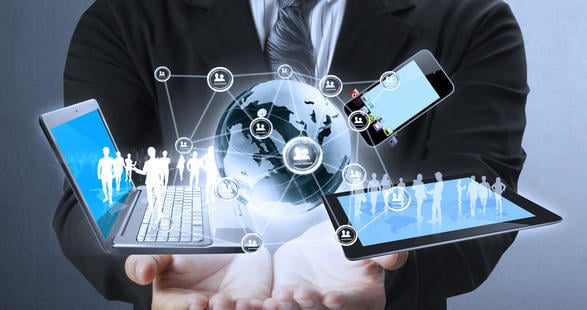What is your definition of "digital transformation?" We asked Heller Report readers, all IT leaders and CIOs, and they did not disappoint with their wealth of replies.

Last week, we posed the question: What does "digital transformation" mean? And as you always do, O beloved readers, you responded with a wealth of definitions both concise and comprehensive.
Your responses fell into four categories:
- Embracing consumerism and improving customer experience
- Device independence and invisible technology
- IT and the business sharing ownership of technology (my favorite!)
- Increasing value of the business (or disruption) through new products, processes and revenue models
Thank you to everyone who submitted definitions of "digital transformation." If you haven't done so yet, please add to our collection in the Comments section below.
1. Embracing consumerism and improving customer experience
"Transformation is when you are able to make the Customer Experience very similar across all channels - Look and Feel, Navigation, using same MDM source, etc. Customers and Employees want consistency and predictability across channels. "
"Digital transformation is being able to provide a “personalized" and “seamless" support to customers across channels (Voice, IVR, Web/Chat, Email, Social) and devices."
"One of my VP's described it as enabling a "frictionless enterprise" where transactions are low touch and data is turned into information."
2. Device independence and invisible technology
"The conversion or migration of a process (or object) from the material world to the on-line world."
"Maintaining technical currency with the consumer and business operations to maximize BI, operational efficiency and employee satisfaction."
"It could be as much about connectedness as it is about information. It is changing the way people react, opening doors for people otherwise unable to communicate."
"To accommodate productivity tools and data access that are 1) device independent, 2) provide one interface inside and outside the office, 3) user role-contained for security, and 4) self-supportable through the first troubleshooting layer. These are the four building blocks of my organization's digital transformation."
3. IT and the business sharing ownership of technology
"Digital transformation is the evolution of the business and IT partnering in a highly engaged online consumer driven society. "
"The transformation is our business partners sharing with IT the responsibility of online consumerism."
"One key aspect of digital transformation is shifting the ultimate ownership of apps, data, content management, etc., into the hands of business units rather than within IT. CIOs should not fear this shift - they should enable it. It opens new pipelines for company-wide efficiency and innovation while simultaneously freeing IT resources to advance the ball more aggressively in new and disruptive technologies aligned with business objectives and satisfying customers."
"Helping people deal with the changes and challenges associated with digital technology, across all aspects of business."
"Create 'data hooks' for each and every business activity, measure, innovate/automate and measure for efficiency gains. Transform continually through data integration across all threads, apply comparative and predictive analysis."
"Most people think of digital transformation from the perspective of front-end which is how to reach out to customers/consumers (Digital Marketing - E-Mail, Social Media, SEO, Paid Search, Websites, Omnichannel/eCommerce channel, Mobile) but it is broader as technologies/platforms need to be changed in the backend."
4. Increasing value of the business (or disruption) through new products, processes and revenue models
"Transformation in the way we gather, store, access, analyze, present and promote the information about our business that helps drive growth and profitability."
"Digital Transformation is defined as the application of digital technology to change (transform) the way an organization strategizes, develops, leverages, and realizes value from its business capabilities."
"For a company to capture the potential in the digital economy, there are opportunities in customers, markets and product."
"The actual transformation comes from new combinations of people, processes, and technology enabled by digitalization."
"Digital transformation means leveraging emerging technology to: 1) enable the development of new innovative products and services 2) enhance the customer experience lifecycle. Both are done with a view to improve our customers’ lives and at the same time improve both our top and bottom lines."
"Digital Transformation, simply put, is the process of improving efficiency and reducing errors through automation and achieving best practices of customer service, management transparency, regulatory compliance and such at the least cost possible."
"Most people in the traditional media industry (print, broadcast, radio) consider digital transformation to mean changing business models to support increasing digital revenue (web, social, mobile, dms, etc) to make-up for the losses in the traditional revenue streams."
"A holistic example is what Netflix did to Blockbuster, Nest doing to Honeywell, Uber to Taxis."


Add a Comment